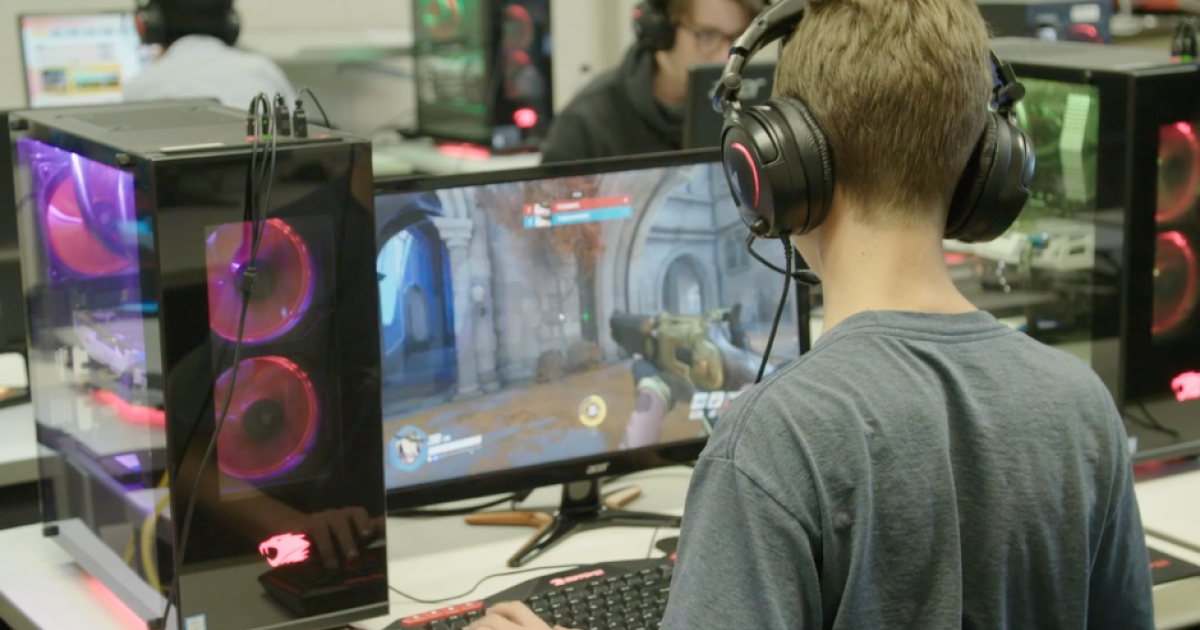
Watch the new CBSN Originals documentary, “Esports: The Price of the Grind,” in the video player above.
While most 20-somethings have barely started their careers, many professional video gamers at that age are already nearing retirement. The peak of a professional esports competitor is so short-lived that players often toss their controller and call it quits by the time they’re in their mid 20s.
The world of esports is demanding, both physically and mentally. Professional gamers, barely past their teens, burn out even faster than athletes. Top competitors are playing 12 to 14 hours a day, at least six days a week, according Richard Lewis, a journalist who covers esports.
At global tournaments, players draw huge crowds to watch them compete against each other in Overwatch, Dota 2, and League of Legends, some of the internet’s most popular games, in what has become nearly a billion dollar industry. According to E-Sport earnings, Valve’s Dota 2 alone paid out over $38 million in prize money in 2017.
“There’s so much money, opportunities to make money,” said Yiliang (Peter) Peng, 25, a top League of Legends player known as “Doublelift” to fans. “It’s like a fully-fledged business.”
Yiliang (Peter) Peng, a top League of Legends player known as “Doublelift,” gets mindfulness coaching with teammates. CBS News
Esports brought in over $900 million in revenue this year alone, and analysts predict it will surpass that figure by over 60 percent in 2020. And as gaming becomes more lucrative, stakes are only increasing, ratcheting up the pressure on players. Gamers can turn pro and go from playing in their parents’ basements to playing in packed arenas with disorienting speed.
Gaming organizations can fuel the stress, expecting players to perform at a professional level, often in environments they’ve never encountered before. “They lose sight that players are people,” said Lewis. “You don’t see the sacrifices … the genuine fear for their livelihood because they didn’t have a good game.”
Retired professional player Dennis Fong, 41, said gaming pressure deters players from pursuing romantic relationships and taking time off from gaming. Players are “basically told, you have to play this full time now,” Fong said. Players are set up to live with fellow gamers in shared homes where they practice constantly.
Some teams have hired psychologists to help players avoid burnout. According to sports psychology consultant Doug Gardner, director of player performance for Immortals, he’s seen players that looked exhausted and “emaciated.” “They would come here and continue to play, and then it’s like that definition of insanity,” he said. “Keep doing the same thing over and over again and expect different results.”
Esports players still in their teens can practice many hours a day and pride themselves on “the grind.” CBS News
Players pride themselves in the long hours they put in. “There’s this badge of honor in esports, ‘If I grind more, I am going to get better,'” Gardner said.
Physical injuries are just as common, especially wrist injuries, which can derail careers. Players can develop carpal tunnel syndrome, where a pinched nerve in the wrist causes pain and numbness.
“If I play for too long, I’ll get pain at the end of the day,” professional player Indy Halpern tells his physical therapist, noting that “too long” is eight hours. During his last visit, he also mentioned lower back pain, and a sharp pain in his wrist.
A rising star in the esports world, Halpern’s fans know him by the name “Space,” his alias during competitions. Straight out of high school, Halpern was recruited to play Overwatch full-time for the Los Angeles Valiant. In addition to earning a salary, Halpern lives rent-free in an apartment paid for by his team, a perk of being a pro gamer.
Indy Halpern gets physical therapy for wrist pain. “If I play too long, I get pain at the end of the day,” he said. CBS News
Celebrity gamers can earn up to millions of dollars. While the grand prizes are big, players make an average salary of around $60,000. They often get housing subsidies, but the expectation is that they’ll be practicing more or less around the clock. Halpern often shows up an hour or two before his teammates to practice.
Overwatch isn’t just a game anymore, it’s his livelihood. “It’s a whole other level of stress,” Halpern said. “You’re playing against professionals. It’s always in the back of your mind. You always have that pressure on your shoulders that you have to perform.”
Below the pro tournament level, there’s a growing pipeline of young gamers developing their skills in school programs. There are over 100 high schools with North American Scholastic Esports Federation (NASEF) clubs for students. Schools in more than a dozen states plus Canada participate, with more clubs in California than anywhere else. A growing number of colleges have added varsity esports programs and some even offer scholarships for gamers.
“It’ll be transformative and a way to engage students that right now education is missing out on,” said NASEF Commissioner Mark Deppe.
“When I look at esports, I see it as uncharted territory and there is risk involved, he said. “But that’s when you find the reward as well.”
© 2018 CBS Interactive Inc. All Rights Reserved.





